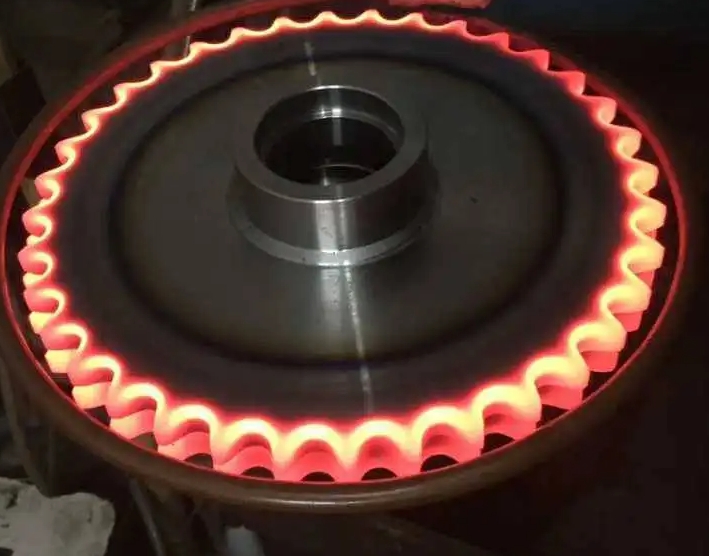- 10
- Mar
How to design and manufacture induction heating and quenching inductors?
How to design and manufacture induction heating and quenching inductors?
1. The diameter of the sensor
The shape of the inductor is determined according to the surface contour of the heating part, and it is required that there must be a certain gap between the induction coil and the part, and that it is uniform everywhere.
When heating the outer circle, the inner diameter D of the inductor = D0+2a; when heating the inner hole, the outer diameter D of the inductor = D0-2a. Where D0 is the diameter of the outer circle or inner hole of the workpiece, and a is the gap between the two. Take 1.5~3.5mm for shaft parts, 1.5~4.5mm for gear parts, and 1~2mm for inner hole parts. If the intermediate frequency heating and quenching is carried out, the gap is slightly different. Generally, the shaft parts are 2.5~3mm, and the inner hole is 2~3mm.
2. The height of the sensor
The height of the inductor is mainly determined according to the power P0 setting of the heating equipment, the diameter D of the workpiece and the determined specific power P setting:
(1) For one-time heating of short shaft parts, in order to prevent overheating of sharp corners, the height of the induction coil should be less than the height of the parts.
(2) When the long-axis parts are heated and cooled locally at one time, the height of the induction coil is 1.05 to 1.2 times the length of the required quenching zone.
(3) When the height of the single-turn induction coil is too high, the heating of the surface of the workpiece is uneven, and the middle temperature is much higher than the temperature on both sides. The higher the frequency, the more obvious it is. Therefore, double-turn or multi-turn induction coils are often used instead.
3. The cross-sectional shape of the induction coil
There are many cross-sectional shapes of the induction coil, such as round, square, rectangular, plate type (outer welding cooling water pipe), etc. When the quenching area is the same, the rectangular cross-section induction coil is the most material-saving, and the heat penetration layer is uniform and round. Worst cross section, but easy to bend. The materials used are mostly brass tubes or copper tubes, the wall thickness of the high frequency induction coil is 0.5mm, and the intermediate frequency induction coil is 1.5mm.
4. Cooling water circuit and water spray holes
Taking into account the heat generated by eddy current loss, each component needs to be cooled by water. For copper tubes, it can be directly cooled by water. The copper plate manufacturing part can be made into a sandwich or externally welded copper tubes to form a cooling water circuit; high-frequency continuous or simultaneous heating adopts automatic cooling. During spray cooling, the diameter of the water spray holes of the induction coil is mostly 0.8~1.0mm, and the intermediate frequency heating is 1~2mm; the angle of the water spray holes of the continuous heating and quenching induction coil is 35°~45°, and the hole spacing is 3~5mm. At the same time, the heating and quenching water spray holes should be staggered, and the hole spacing should be uniform. Generally, the total area of the water spray holes should be smaller than the area of the water inlet pipe to ensure that the water spray pressure and the water inlet pressure meet the requirements.

